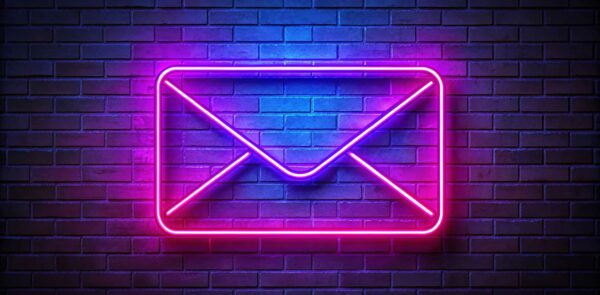
Jump to a section:
Email marketing remains one of the most effective channels for nurturing leads, engaging existing customers, and driving repeat sales. According to a 2023 study by Inbox Insider, email’s average ROI is a staggering 36:1—meaning that for every dollar you invest, you can expect a return of $36. That’s a higher return than many other digital marketing channels, from social media ads to paid search.
However, as inboxes become increasingly crowded, standing out is becoming more difficult. This is where generative AI can make all the difference. Imagine having a reliable assistant that helps you tailor subject lines, personalize content at scale, optimize send times, and continuously test new variations—freeing up your time to focus on big-picture strategy and building authentic relationships with your audience. Generative AI can do exactly that, but it also comes with a few challenges and considerations.
The Challenges of Integrating Generative AI into Email Marketing
Generative AI has tremendous potential, but it’s not a plug-and-play solution. Let’s look at some of the obstacles you might face along the way.
1. Maintaining Brand Voice and Authenticity
A distinctive brand voice is key to building trust and loyalty. While AI-generated content can be fast and efficient, it might not capture your brand’s personality perfectly on the first try. A 2022 survey by Automated Marketing Hub found that 37% of AI-generated email copy needed heavy editing to match the brand’s tone and style. If AI isn’t “trained” on the nuances of your brand’s identity—like witty humor or a compassionate, empathetic vibe—it can produce content that feels generic or off-brand.
2. Over-Reliance on Automation
With so many tasks involved in email marketing—segmentation, design, analytics—it’s tempting to rely heavily on AI for nearly everything. But a strategy that’s too automated can create a robotic experience for subscribers. People appreciate knowing there’s a human behind the messages they receive, someone who understands their needs and can respond to feedback in a genuine way. Striking the right balance between automated efficiency and human warmth is vital.
3. Data Privacy and Ethical Concerns
Generative AI typically requires large data sets to deliver more accurate personalization. While advanced segmentation can improve open rates and conversions, it also raises questions about data privacy. Regulations like the General Data Protection Regulation (GDPR) and the California Consumer Privacy Act (CCPA) impose strict guidelines on how companies store and use personal data. If your AI-driven efforts aren’t compliant, you could face substantial legal penalties and reputational damage.
4. Learning Curve and Tool Selection
Not all AI is created equal. Some tools specialize in writing subject lines; others focus on analytics or list segmentation. Figuring out which solutions best serve your needs can be a time-consuming process. Additionally, certain AI tools come with a steep learning curve, requiring upfront training and ongoing maintenance. Smaller teams might find this particularly daunting.
5. Deliverability Issues
Spam filters are becoming more sophisticated in identifying overly “templated” or repetitive content. If your AI-generated emails start to look too similar or rely on repetitive phrases, you risk landing in the spam folder. Ensuring your AI outputs vary enough and meet email deliverability best practices is a unique challenge you’ll need to watch closely.
Strategy 1: AI-Enhanced Email Subject Line Generation
Your subject line is the first—and sometimes only—opportunity to capture someone’s attention in a crowded inbox. According to a report by the Email Marketing Academy, 47% of email recipients open an email based solely on the subject line. Generative AI is particularly adept at creating short, punchy lines that pique curiosity or convey value.
How to Implement
- Define Your Tone and Objectives
Start by training your AI tool with examples of high-performing subject lines. Indicate any nuances—like humor, urgency, or exclusivity—that match your brand. Clarify your objectives: Are you promoting a sale? Sharing a new blog post? Inviting users to an event? - Generate Multiple Variations
Prompt the AI to provide several subject line options based on your parameters. For example, “Generate five subject lines that focus on driving curiosity for our spring sale, using a warm and friendly tone.” - A/B Test the Winners
Don’t pick a subject line blindly. Conduct A/B tests with your top 2-3 AI-suggested lines, sending each to a small subset of your list. Track open rates and choose the subject line that performs best to send to the remainder of your audience. - Stay Alert for Spam Triggers
AI might suggest words like “free,” “guarantee,” or “last chance”—all of which can trigger spam filters if overused. Make sure your subject lines remain enticing but not spammy.
Potential Roadblocks
- Over-reliance on Clickbait: AI might produce overly sensational lines that drive opens but disappoint readers once they see the actual content. Check for accuracy and authenticity to maintain trust.
- Brand Inconsistency: If your brand is sophisticated and AI churns out hype-laden text, it’ll feel jarring to subscribers.
Strategy 2: Hyper-Personalized Email Content and Dynamic Segmentation
Personalization works. Studies suggest that emails with personalized subject lines are 26% more likely to be opened. However, personalization goes beyond addressing the recipient by their first name. Using AI-driven segmentation, you can tailor entire email bodies to reflect subscriber preferences, behaviors, or demographic data—leading to significantly higher engagement.
How to Implement
- Collect Relevant Data
Gather data like past purchases, browsing history, engagement patterns, and demographic details. The more relevant data you feed the AI, the more precise your segmentation will be. - AI-Driven Clustering
Let the AI analyze subscriber behavior to identify natural groupings (also called “clusters”). For example, you might discover a segment that always clicks on eco-friendly product offers versus another that responds better to premium, luxury-themed promotions. - Generate Dynamic Email Blocks
Once your AI identifies segments, use dynamic content blocks in your emails to tailor text, product images, and offers. For instance, Segment A might see casual, budget-friendly items while Segment B sees high-end, luxury picks. - Automate in Real Time
After the AI sets your segments, it can update them automatically as user behavior changes. A subscriber who usually shops budget but suddenly purchases a luxury item might need to be moved to a different segment.
Potential Roadblocks
- Data Privacy: Ensure you have consent to use subscriber data for personalization. Non-compliance with GDPR or other regulations could lead to major fines.
- Complexity: Setting up dynamic segments can be intricate. Start small with a few segments and expand as you become more confident in your AI’s capabilities.
Strategy 3: Generative AI for Automated Email Copywriting
From welcome sequences to cart-abandonment emails, writing compelling copy can be a time-consuming chore. Generative AI can draft entire email campaigns in minutes, letting you focus on strategy, campaign analysis, and creative branding elements.
How to Implement
- Train the AI on Your Brand Voice
Provide sample emails or brand guidelines so the AI understands your tone—whether it’s playful, formal, or somewhere in between. Make sure you highlight key phrases or terms that resonate with your audience. - Structure Your Prompt
Write a clear and detailed prompt: “Draft a 200-word email introducing our new product line to frequent buyers who haven’t purchased in 3 months. Maintain a friendly tone, offer a 10% discount code, and include a clear call to action.” - Review and Edit
AI-generated copy should be seen as a starting point, not the final word. Edit for grammar, clarity, emotional impact, and brand alignment. Pay attention to sections that sound generic or robotic. - Incorporate Emojis or Rich Media
Depending on your brand, you might want to add visual elements. AI can propose relevant images, GIFs, or emojis to boost engagement, but you’ll need to confirm that these visuals suit your brand style.
Potential Roadblocks
- Over-Automation: If all your emails are AI-generated, they may start to feel impersonal or repetitive. Mix in content that demonstrates a real person behind the scenes—like personal anecdotes or updates from your team.
- SEO vs. Readability: AI might optimize for keywords at the cost of readability or user experience. Always prioritize easy, friendly language.
Strategy 4: Smart Email Send-Time Optimization
Even the most compelling emails can languish unread if they’re delivered at a suboptimal time. AI can analyze your subscribers’ behaviors—like typical open times, time zones, and device usage—to predict the ideal moment to hit send. In fact, research from Email Timing Insights (2022) shows that carefully timed emails can boost open rates by up to 30%.
How to Implement
- Analyze Engagement History
Feed your AI tool with data on when subscribers have previously interacted with your emails. Look at variables like day of the week, time of day, and device type. - Send-Time Predictions
The AI identifies patterns in each user’s engagement habits. For instance, one user might open emails more often on weekends, while another responds best to early weekday mornings. - Automated Scheduling
Instead of blasting your entire list at once, let AI schedule each individual email for the predicted best time. This “send-time personalization” can be applied at scale. - Monitor and Adjust
Continuously track open rates, click-throughs, and conversions. If you find that certain predictions aren’t yielding results, the AI can self-adjust or you can manually tweak its logic.
Potential Roadblocks
- Large Time Zone Differences: If you have a global audience, the AI might schedule batches across 24 hours. Watch for deliverability constraints if your email service provider (ESP) has daily send limits.
- Unpredictable Changes: Holidays, major news events, or seasonal trends can disrupt normal open times. Make sure your AI is flexible enough to adapt to sudden shifts in user behavior.
Strategy 5: Generative AI for Interactive Email Elements and Gamification
Email is often perceived as static, but new technologies enable interactive components—like embedded polls, quizzes, or mini “games”—that spark subscriber engagement. Generative AI can help you come up with creative ideas and even produce the HTML snippets required for these interactive features.
How to Implement
- Define Your Goal
Are you trying to boost click-through rates, gather feedback, or simply delight your subscribers? Knowing your objective helps AI propose relevant interactive concepts. - Prompt AI for Gamification Concepts
For instance, “Suggest three fun quiz or game ideas for an email campaign aimed at teaching customers about our latest product features.” - Generate Content Blocks
AI can draft quiz questions, design mini “spin-the-wheel” promotions, or suggest interactive layouts. You’ll still need a developer or a specialized email platform that supports dynamic content to implement them fully. - Track Engagement
Interactive emails can provide unique engagement insights, like how many people participated in a quiz or how they answered questions. Feed this data back into your AI to refine future campaigns.
Potential Roadblocks
- Platform Limitations: Not all ESPs support advanced interactive features. Make sure yours does before finalizing your plan.
- Mobile Compatibility: Interactive elements need rigorous testing on different devices and email clients to ensure they function properly.
Strategy 6: AI-Assisted Email Drip Campaigns and Lead Nurturing
Drip campaigns automatically send subscribers a sequence of emails over time. They’re invaluable for onboarding, lead nurturing, and upselling. Generative AI can make these campaigns more adaptive and data-driven by adjusting the flow or content based on individual user actions.
How to Implement
- Map the Journey
Outline your drip sequence: how many emails you plan to send, the intervals between them, and the desired outcome (e.g., first purchase, webinar sign-up, subscription renewal). - Adaptive Triggers
Let the AI analyze user behavior—like email opens, link clicks, or site visits—to decide the next email in the sequence. For example, if a user clicks a link about a specific product, the AI might accelerate a follow-up email with more details or a special offer. - Dynamic Content Generation
Use AI to write custom messages for each stage of the drip. By analyzing user interactions, the AI can emphasize different value propositions or answer frequently asked questions. - Real-Time Updates
If a user unsubscribes, stalls mid-sequence, or completes the desired action early, the AI can automatically remove or move them to another campaign.
Potential Roadblocks
- Complex Setup: AI-driven drip campaigns can get complicated as you add more triggers and segments. Start with a smaller set of triggers to ensure everything works smoothly.
- Over-Automation Risks: If your drip sequence is too aggressive, subscribers may feel bombarded. Monitor unsubscribe and complaint rates closely.
Strategy 7: Advanced Email A/B Testing with AI Insights
A/B testing is fundamental to refining subject lines, copy, images, or CTAs. However, it can be time-consuming to set up multiple tests and interpret the data. AI can automate these processes, quickly identifying the best-performing variants and even predicting potential results before you run the tests live.
How to Implement
- Select Variables
Decide what you want to test: subject lines, preview text, CTA buttons, layout, or personalization elements. It’s wise to test one variable at a time for clearer insights. - Generate Variations
Ask your AI tool to produce multiple versions. For example, “Create three CTA variations—one with urgency, one with curiosity, and one with a straightforward tone.” - Run the A/B Test
Send each variation to a randomized subset of your list. Typically, you’ll want each variant to go to at least a few hundred subscribers for statistically significant results. - Leverage AI Analytics
Instead of manually crunching click-through or open rate data, feed results back to the AI. It can highlight the winning variation and potentially explain why it won based on patterns like specific word choices or visual elements.
Potential Roadblocks
- Small Lists: If your list is tiny, it can be harder to get statistically valid results. AI may help with predictive insights, but you’ll still want to be cautious in your conclusions.
- Test Fatigue: Over-testing can wear out your subscribers if they see too many small changes. Keep tests meaningful and pace them reasonably.
Strategy 8: AI-Driven Email Deliverability and Compliance Monitoring
Even the most innovative AI-generated email can’t help you if it ends up in the spam folder. Deliverability remains critical for email ROI, and AI can assist by continuously scanning for red flags—such as excessive spam-trigger words, broken links, or unbalanced text-to-image ratios. It can also ensure you’re adhering to GDPR, CAN-SPAM, and other regulations.
How to Implement
- Set Deliverability Benchmarks
Identify metrics you want to track: spam complaint rate, bounce rate, sender reputation scores, etc. - Automated Content Checks
AI can scan your email copy and highlight problematic phrases or formatting that might trigger spam filters. It can also suggest alternative phrasing that’s less likely to be flagged. - Compliance Alerts
If your campaign includes data usage that might conflict with privacy regulations, AI can prompt you to review the campaign before sending. This might be especially important for businesses that operate in multiple countries with different laws. - Ongoing Performance Monitoring
Continuously watch deliverability rates, open rates, and spam complaints. If metrics decline, the AI can offer troubleshooting steps—like updating your DKIM record or confirming your email list hygiene.
Potential Roadblocks
- Dependence on ESP Data: You’ll need robust integration with your email service provider to gather necessary stats in real time.
- Constantly Evolving Rules: Spam filters and privacy laws change frequently. Ensure your AI receives the latest updates or guidelines to stay compliant.
Strategy 9: Measuring Email ROI with AI-Based Analytics
Ultimately, you’ll want to know if your AI-driven efforts are paying off. Traditional email marketing metrics (opens, clicks, conversions) tell only part of the story. AI-based analytics can dig deeper—evaluating lifetime customer value, user journeys across multiple campaigns, and the ripple effects of your email efforts on other channels.
How to Implement
- Centralize Your Data
Combine data from your ESP, website analytics, e-commerce platform, and CRM into one AI-powered dashboard. This holistic view makes it easier to see how email impacts overall revenue and customer engagement. - Attribution Modeling
Use AI to attribute sales or conversions to specific emails (or sequences of emails). For example, a user might need to interact with three different campaigns before converting. - Predictive Insights
Advanced AI can forecast how small changes in open rate or list size might impact future revenue. This helps you allocate budget and resources more effectively. - Actionable Recommendations
Instead of just listing numbers, AI dashboards can suggest next steps—like “Focus on re-engaging segment B, which has a high click-through rate but low conversion.”
Potential Roadblocks
- Data Overload: Too many metrics can paralyze decision-making. Set clear KPIs—like revenue per email or cost per acquisition—to keep things focused.
- Integration Complexity: Bringing all data into a single platform can be tricky if you use multiple tools. Prioritize robust APIs and data-sharing capabilities.
Cheat Sheet: Key AI-Driven Email Marketing Strategies
| Strategy | Top 5 Tactics |
|---|---|
| AI-Enhanced Subject Line Generation | 1. Train AI on brand style & tone 2. Generate multiple subject line variations 3. A/B test the best candidates 4. Watch out for spam trigger words 5. Balance curiosity and authenticity |
| Hyper-Personalized Content & Segmentation | 1. Gather relevant data (purchase history, demographics) 2. Use AI clustering for advanced segments 3. Employ dynamic content blocks 4. Update segments in real time 5. Maintain GDPR/CCPA compliance |
| Generative AI for Automated Email Copywriting | 1. Provide sample emails/brand guidelines 2. Use structured prompts for clarity 3. Edit AI-generated drafts for emotional impact 4. Consider adding emojis or GIFs 5. Limit full automation to preserve authenticity |
| Smart Send-Time Optimization | 1. Analyze user engagement patterns 2. Leverage AI for individual-level scheduling 3. Continuously track open rates across segments 4. Adapt to sudden shifts (holidays, news) 5. Monitor deliverability for large-scale sends |
| Interactive Elements & Gamification | 1. Set goals for engagement (quizzes, polls) 2. Prompt AI for creative interactive ideas 3. Generate HTML snippets dynamically 4. Test compatibility on mobile devices 5. Use engagement data for future personalization |
| AI-Assisted Drip Campaigns & Lead Nurturing | 1. Map the user journey (onboarding, upselling) 2. Use AI for adaptive triggers 3. Dynamically customize drip emails 4. Move subscribers between campaigns automatically 5. Start small, then scale complexity |
| Advanced A/B Testing with AI Insights | 1. Test one variable at a time (subject, CTA, layout) 2. Generate multiple variations via AI 3. Send each variant to a test group 4. Let AI interpret performance data 5. Expand the winning version to broader segments |
| Deliverability & Compliance Monitoring | 1. Set benchmarks for spam complaints, bounces 2. Use AI to scan for spammy phrases 3. Automate compliance checks (GDPR, CAN-SPAM) 4. Maintain a healthy text-to-image ratio 5. Fix flagged issues (bad links, questionable phrases) before sending |
| Measuring ROI with AI-Based Analytics | 1. Centralize data from ESP, CRM, and web analytics 2. Use AI for multi-touch attribution 3. Forecast potential outcomes (sales, conversions) 4. Monitor key metrics (CPC, revenue per email) 5. Act on recommendations to refine campaigns and segmentation |
Conclusion
Generative AI holds enormous promise for email marketers, offering new levels of personalization, efficiency, and insight. From crafting irresistible subject lines to automating drip campaigns and optimizing send times, AI can free up your creative energy and allow you to focus on building genuine relationships with your subscribers. At the same time, there are legitimate challenges—like maintaining brand authenticity and navigating data privacy regulations—that require human oversight and critical thinking.


